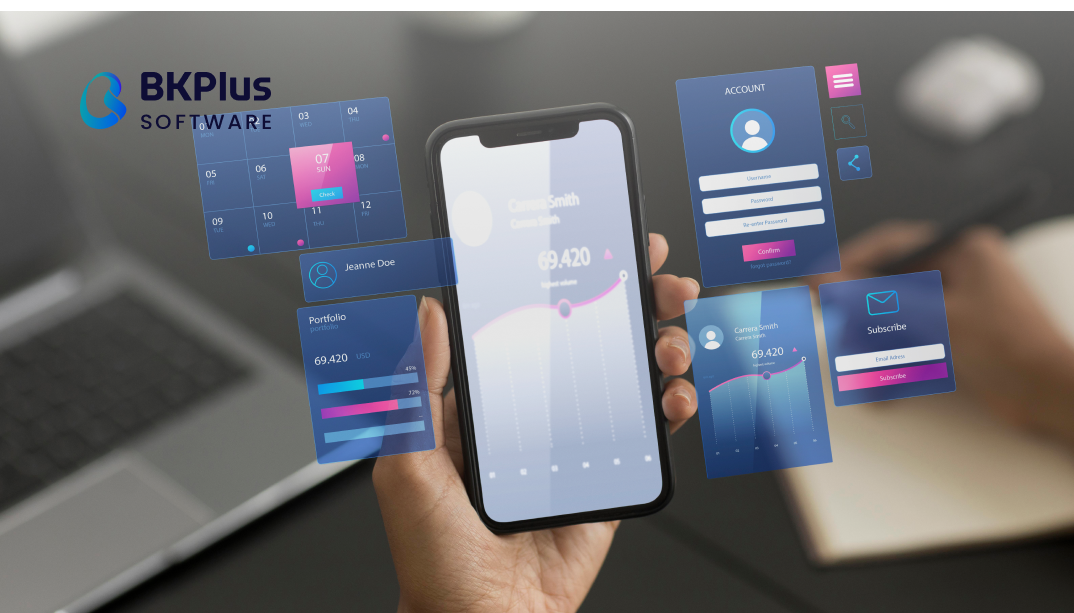In our increasingly mobile-driven world, crafting exceptional native apps is a game-changer for businesses. This blog, Mastering Native App Development: A Roadmap to Mobile Success, dives deep into this essential skill set, empowering you to navigate the exciting world of native app creation.
Benefits of Native App Development
Native App Development offers numerous advantages when compared to other mobile app development approaches, such as cross-platform or hybrid development. Businesses and Mobile App Development companies often choose native app development due to its unique benefits, which include:
#1 Native Apps Have The Best Performance
One of the hallmarks of a successful mobile app is its ability to deliver a smooth and responsive user experience. This is where native app development excels. Native apps are built specifically for a particular operating system (iOS or Android), allowing them to leverage the device’s hardware and functionalities directly.
This translates to superior performance, faster load times, seamless animations, and overall fluidity compared to web apps or hybrid options. By mastering native app development, you can create apps that feel like an intrinsic part of the user’s device, keeping them engaged and coming back for more.
#2 Native Apps Are More Interactive And Intuitive
Native mobile applications are considerably more responsive to user input and output. These apps consider their devices’ OS environments, making them seem like an integral part of the device.
The best advantage of native mobile apps is a better user experience. Native applications are designed specifically for a particular operating system. They follow strict standards that ultimately improve and synchronize the user experience with the specific operating system. As a result, the app’s flow is more natural since each platform has its UI criteria.
Users can interact with apps using actions and gestures they’re already familiar with if they follow particular standards.
#3 Developers can access the full feature set of devices thanks to native apps
Native apps are written specifically for a platform and take advantage of the device’s capabilities. These applications can immediately access the device’s hardware, such as the GPS, camera, and microphone, making them more rapid in execution.
Push notifications are yet another significant benefit of choosing native app development. You’ll have access to every API and tool offered by the platform that you’re developing for. Technically, there are no restrictions on how the new app may be utilized.
#4 Better Store Support
Native apps are often easier to publish and rank higher in the app store than hybrid apps since they provide superior performance and speed. But the difference in most applications is unobtrusive.

#5 Increased Scalability
The flexibility in resources management and the variety of tools accessible also make apps designed for the native environment more scalable.
Native App Development Platforms
There are two major platforms for Native App Development, each with its unique tools and programming languages. Choosing the right platform is a critical decision for businesses and top mobile app development companies, as it directly impacts the app’s target audience and overall performance. In this section, we will discuss the two dominant platforms, Android and iOS, along with their respective tools and languages.
#1 Native App Development for iOS
The iOS operating system, unlike Android, is completely closed source and is designed solely for Apple’s hardware. To develop native mobile apps for the iOS platform, you’ll need a Mac computer. Objective-C and Swift are the two options for building native iOS apps. Apple offers several excellent tools and resources for iOS development, such as:
- iOS SDK integrated with the Cocoa Touch UI framework.
- XCode, the official IDE for iOS development.
- Swift Playgrounds, a learning platform for Swift development.
- TestFlight, a beta testing app.
#2 Native App Development for Android
You can create native Android apps in Java, Kotlin, and C++. Google gives you powerful Android development tools, such as:
- The Android Software Development Kit (SDK), which comes with Android Studio, is the official IDE (integrated development environment) for Android.
- Command-line tools for Windows, Mac, and Linux.
- Firebase, a comprehensive mobile development platform.
- Android Jetpack, a collection of pre-made Android components.
Popular Native App Development Frameworks
While traditional Native App Development involves writing separate codebases for Android and iOS, several popular frameworks enable developers to create native apps for both platforms using a single codebase. These frameworks have gained traction among Mobile App Development and individual developers, as they offer a more efficient approach while retaining the benefits of native apps. In this section, we will explore some of these popular frameworks:
#1 React Native
Unlike traditional native development, which requires separate codebases for iOS and Android, React Native allows you to build beautiful, high-performing apps using a single Javascript codebase.
This translates to significant cost and time savings, making it a perfect choice for businesses aiming to reach a wider audience across both major mobile platforms while adhering to a strict development timeline and budget. As you explore the vast landscape of native app development, understanding the potential of React Native is a key step on your roadmap to mobile success.
#2 Flutter
Flutter allows you to build beautiful, high-performance apps for both iOS and Android using a single codebase. This translates to faster development times and reduced costs, without sacrificing the native feel users expect.
Whether you’re a seasoned developer or just starting your mobile journey, Flutter’s intuitive Dart language and rich widget library make it easier than ever to craft exceptional native experiences.
#3 Xamarin
Xamarin shines as a powerful tool for reaching a broader audience efficiently. This framework allows you to develop native apps for iOS and Android using a single codebase in C#. This translates to significant cost and time savings, as you’re not building separate apps from scratch for each platform.
Additionally, Xamarin offers the advantage of maintaining a native look and feel for your app on each platform, ensuring a seamless user experience. If you’re looking to conquer the mobile market with high-performing native apps, Xamarin is a compelling option to consider.

#4 NativeScript
NativeScript empowers developers to leverage their existing JavaScript or TypeScript skills to build stunning native apps for both iOS and Android. NativeScript achieves this by directly translating your code into native UI components, ensuring your app feels indistinguishable from one built with platform-specific languages. This translates to exceptional performance, fluid animations, and a user experience that seamlessly integrates with the look and feel of each device.
Case Studies: Successful Native Apps
Native apps can quickly access several devices’ services, such as a microphone, accelerometer, or push notifications. Navigation software, such as Waze, and social applications like Twitter are just two examples of native applications. Pokémon Go is an excellent example of a game that uses native technology.
#1 Pokemon Go
Pokémon Go efficiently utilizes system capabilities – GPS for mapping areas, the camera for augmented reality, and the accelerometer to measure acceleration – for the best possible user experience. Pokémon Go may also use push notifications intended to bring users back to the game over time.
#2 WhatsApp
WhatsApp is a widely used messaging program that can be downloaded on both iOS and Android devices. This platform was the fourth-most popular app in the world in Q3 2020, with over 140 million downloads. As a result, this native software example may be considered for business communication solutions at work.
#3 Spotify
One of the most popular native applications, Spotify – a well-known example – claims itself among the essential apps to have on smartphones of music listeners. To explain it, it’s a digital music service center that gives users access to tens of thousands of songs and podcasts from various labels and media companies worldwide. In addition, Spotify is one of the most prominent cloud-native application examples owing to Google Cloud’s efficiency-boosting capabilities. To better serve customers, Spotify has boosted performance efficiency in its tasks by leveraging Google Cloud.
#4 Waze
Waze is a GPS navigation program that has delighted drivers all around the world. This native app example works on Android and iOS devices with built-in GPS capabilities. The app enables users to navigate by providing turn-by-turn directions, route specifics, and user-submitted transit times. Waze also has the benefit of being completely free to download and use.
Conclusion
Native development is the way to go if you want to build a high-performance app, which will work on a given platform. It may be more costly than developing a hybrid or cross-platform application, but in the long term, it may be the solution that will bring you success.
If you would like to develop a native app we are always happy to share our expertise and knowledge in that field. Use our Free Consultation service to meet with our CTO, who will dispel all doubts. BKPlus Software stands out as a provider of the finest native mobile app development services. So, contact us today and build the most impressive and engaging apps!



